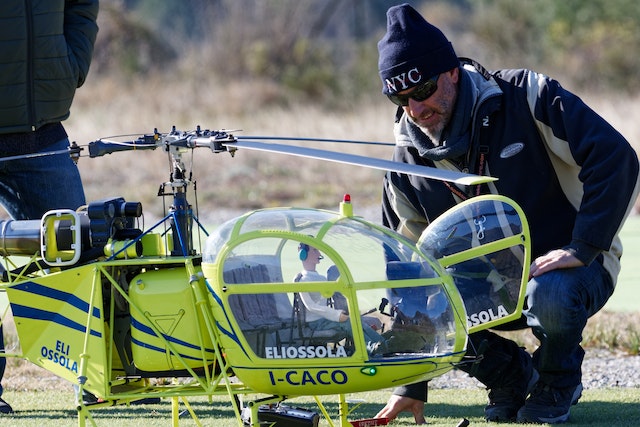In recent years, the world has witnessed significant advancements in delivery systems. Traditional methods are being replaced by innovative solutions, and one such technology poised to revolutionize the delivery industry is drone delivery. This article explores the future of delivery systems and the transformative impact of drones on logistics and e-commerce.

1. The Rise of Drone Delivery
Drone delivery has gained immense popularity due to its potential to redefine the delivery landscape. Unmanned aerial vehicles (UAVs), commonly known as drones, offer numerous advantages over traditional delivery methods.
1.1 Advantages of Drone Delivery
Drones offer unprecedented speed and efficiency in delivering packages. With the ability to bypass traffic congestion and take direct routes, drones can significantly reduce delivery times. This efficiency translates into faster and more reliable service for customers.
Moreover, drone delivery systems have the potential to reduce costs associated with human labor, fuel, and vehicle maintenance. This cost reduction enables businesses to scale their delivery operations more easily, thereby enhancing their market reach and customer satisfaction.
1.2 Challenges and Concerns
While drone delivery systems hold great promise, several challenges and concerns need to be addressed. Safety regulations, airspace management, privacy issues, and the potential for misuse are some of the key areas that require attention.
2. Current State of Drone Delivery Systems
The current state of drone delivery systems is characterized by rapid advancements and ongoing experiments. Several major players in the logistics industry, including Amazon and Google, have invested heavily in developing drone delivery capabilities.
2.1 Major Players in Drone Delivery
Companies like Amazon Prime Air, UPS Flight Forward, and Wing (owned by Alphabet Inc.) are leading the way in drone delivery research and development. These companies are actively testing and refining their drone delivery systems to ensure safe and efficient operations.
2.2 Regulatory Frameworks
Regulatory frameworks are being established to address the operational challenges of drone delivery. Governments worldwide are collaborating with industry stakeholders to develop guidelines and standards for drone usage. These regulations aim to ensure safety, protect privacy, and facilitate the integration of drones into existing airspace.
3. Technological Advancements
Technological advancements are pivotal to the growth and adoption of drone delivery systems. Two key areas of development are artificial intelligence (AI) and machine learning and improvements in battery technology.
3.1 Artificial Intelligence and Machine Learning
AI and machine learning algorithms are crucial for enabling autonomous flight and navigation capabilities in drones. These technologies allow drones to detect and avoid obstacles, optimize flight paths, and enhance overall operational efficiency.
3.2 Improvements in Battery Technology
Battery technology plays a vital role in extending the flight range and payload capacity of drones. Advances in battery efficiency and energy density have significantly increased the endurance and capabilities of drone delivery systems.
4. Impact on E-commerce and Logistics
Drone delivery systems have the potential to revolutionize the e-commerce and logistics industries, bringing about numerous benefits for businesses and consumers alike.
4.1 Faster and More Efficient Deliveries
By eliminating the constraints of ground-based transportation, drones can offer faster and more efficient deliveries. Customers can receive their orders within hours, enhancing the overall shopping experience.
4.2 Cost Reduction and Scalability
Drone delivery systems can help businesses reduce costs associated with traditional delivery methods. The automation and scalability of drone operations enable companies to streamline their logistics processes and reach a larger customer base.
4.3 Environmental Benefits
The adoption of drone delivery can contribute to a greener and more sustainable future. By minimizing the use of traditional vehicles, drone delivery reduces carbon emissions and traffic congestion, resulting in a positive environmental impact.
5. Future Potential and Adoption
The future potential of drone delivery extends beyond individual package deliveries. It encompasses concepts such as urban air mobility and integration with existing delivery systems.
5.1 Urban Air Mobility
Drone delivery systems can pave the way for urban air mobility, where drones are used for various transportation purposes. This concept holds immense potential for transforming how people and goods move within cities.
5.2 Integration with Existing Delivery Systems
To fully leverage the benefits of drone delivery, integration with existing delivery systems is essential. Hybrid models that combine drones with traditional vehicles can optimize last-mile deliveries and further improve efficiency.
6. Overcoming Challenges and Concerns
To achieve widespread adoption of drone delivery, challenges and concerns related to safety, privacy, and public acceptance need to be addressed effectively.
6.1 Safety and Privacy
Stringent safety measures and privacy safeguards must be in place to ensure the secure and responsible operation of drone delivery systems. Robust technological solutions and comprehensive regulations can mitigate risks and build public trust.
6.2 Public Acceptance
Public perception and acceptance of drone delivery will play a crucial role in its successful implementation. Educating the public about the benefits, safety measures, and privacy protocols associated with drone delivery can help alleviate concerns and encourage acceptance.
7. Conclusion
The future of delivery is being reshaped by drone delivery systems. With their speed, efficiency, and potential for cost reduction, drones offer a transformative solution for e-commerce and logistics. However, addressing challenges and concerns, investing in technological advancements, and fostering public acceptance are vital steps toward realizing the full potential of drone delivery.
FAQs (Frequently Asked Questions)
- How safe are drone delivery systems?
- Drone delivery systems prioritize safety through robust technological features and adherence to regulatory frameworks. Safety measures include obstacle detection, collision avoidance, and secure operational protocols.
- What are the privacy concerns associated with drone delivery?
- Privacy concerns mainly revolve around data collection during drone operations. Companies implementing drone delivery systems are committed to protecting customer data and ensuring compliance with privacy regulations.
- Will drone delivery replace traditional delivery methods entirely?
- While drone delivery has its advantages, it is unlikely to replace traditional delivery methods entirely. Instead, it will complement existing systems and offer more efficient and faster options for certain deliveries.
- Are there any limitations on the weight and size of packages that can be delivered by drones?
- Drone delivery systems have payload limitations, and the weight and size of packages that can be delivered depend on the specific drone’s capabilities. However, technological advancements are constantly expanding these limitations.
- How long until drone delivery becomes widely accessible to consumers?
- The widespread accessibility of drone delivery systems will depend on factors such as regulatory developments, technological advancements, and public acceptance. It is expected to be progressively available over the coming years.


